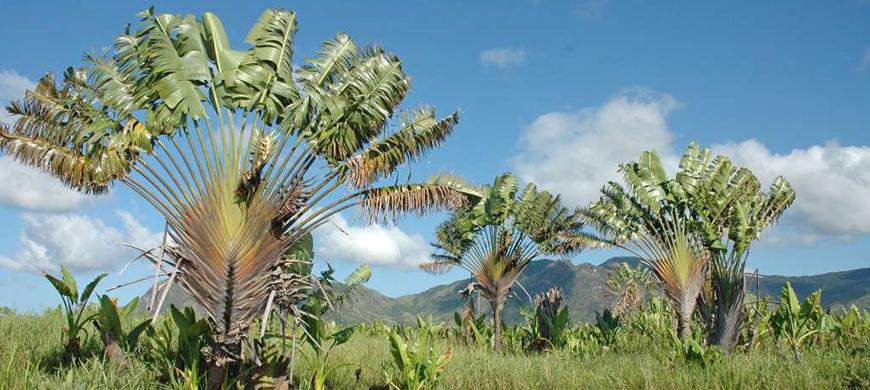Its fan shape distinguishes it from any tree. In fact, the traveler's tree does not follow the definition given by botanists to a tree. They would rather say that it is a herbaceous plant erected on a stem which exceeds the 10 m height. The adult plant can reach 20 m including its broad leaves.
Its scientific name shows that it is part of the endemic flora of Madagascar.. The ravenala madagascariensisflowers in summer. On each bract then appear large white flowers turning towards cream color. Then come the fruits which are large capsules inside which seeds are housed., like peas. The intense blue color of these seeds attracts birds.
Instead of bees and butterflies, it is the lemurs and bats which ensure the pollination of the traveler's tree. If you undertake a trip to Madagascar, particularly on the eastern and northern parts of the island, you will certainly find some along the way. You will learn how the inhabitants use its trunks and leaves to make their plant huts.
Do you know what its original name means, “ravinala” in Malagasy ? – Forest leaves ! Sadly, this exotic plant is becoming rarer due to burning. Also, it is already exported to all island countries such as the Comoros, the Guadeloupe, Guyana and Reunion. Martinique uses it as an ornamental plant, but its favorite terrain is Mauritius, where it grows like a plague.

The traveler's tree
28 December 2016
0 comment







Comment (0)